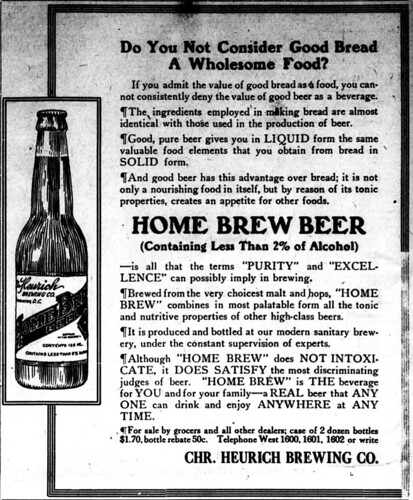 The annual Craft Brewers Conference has arrived in Washington, D.C., running today through Friday. Rather than a consumer beer tasting and brewery competition, this is a confab of and for brewers: the technology and science of beer, the business of beer, the selling of beer, the regulations of beer. And, of face-to-face networking. The peers of beer, if you will.
The annual Craft Brewers Conference has arrived in Washington, D.C., running today through Friday. Rather than a consumer beer tasting and brewery competition, this is a confab of and for brewers: the technology and science of beer, the business of beer, the selling of beer, the regulations of beer. And, of face-to-face networking. The peers of beer, if you will.
From March 26-29, America’s small and independent craft brewers will gather in Washington, D.C. for the 30th edition of the Craft Brewers Conference (CBC) & BrewExpo America. Presented by the Brewers Association, CBC is the largest industry event, serving both brewpubs and packaging breweries. CBC joins brewers from across the country for over 80 seminars focusing on topics including sustainability, sales, packaging and export development, along with daily receptions, brewery tours, and hospitalities. BrewExpo America is the premier trade show for brewers, with hundreds of vendors showcasing the latest and best products and services.
It's important to understand what is meant by 'craft' brewery. This is
not a legal, governmental, term. It is a definition of and by the breweries themselves, through their trade group, the Brewers Association, organizer of the event.
An American craft brewer is small, independent and traditional.
Small: Annual production of 6 million barrels of beer or less. Beer production is attributed to a brewer according to the rules of alternating proprietorships. Flavored malt beverages are not considered beer for purposes of this definition.
Independent: Less than 25% of the craft brewery is owned or controlled (or equivalent economic interest) by an alcoholic beverage industry member who is not themselves a craft brewer.
Traditional: A brewer who has either an all malt flagship (the beer which represents the greatest volume among that brewers brands) or has at least 50% of its volume in either all malt beers or in beers which use adjuncts to enhance rather than lighten flavor.
There is some controversy about that definition, which many have addressed (including me). This week, that's a discussion deferred.
This is the first time in
its history that the Conference has 'been' to Washington, D.C. I myself have been to two Craft Brewers Conferences: one in Austin, Texas, in the early 1990s, the other in Seattle, Washington in the late 1990s. In the 'craft' beer world, that's a virtual lifetime ago: much has changed, the number of breweries ballooning to over 2,000, the most ever in the history of brewing in the United States.
Working for a
wholesaler, I sell beer for a living; so I'll be at the CBC to drum up brewery business. But, as I wrote in this blog's masthead, I'm a lover of beer: not simply with its flavors —as delicious, complex, and varied as they may be— but with its history, science, lore, and evolving creation. Those are the reasons why this week will be, for me, a privilege and a treat.
The new breweries of Washington, D.C., and those of neighboring Virginia and Maryland, will proudly be playing host. The 'craft' beer bars and restaurants of the area will be pulling out all the stops with a multitude of events, most open to the public.
There will be telling of tall tales. There will be drinking of beer. Much.














